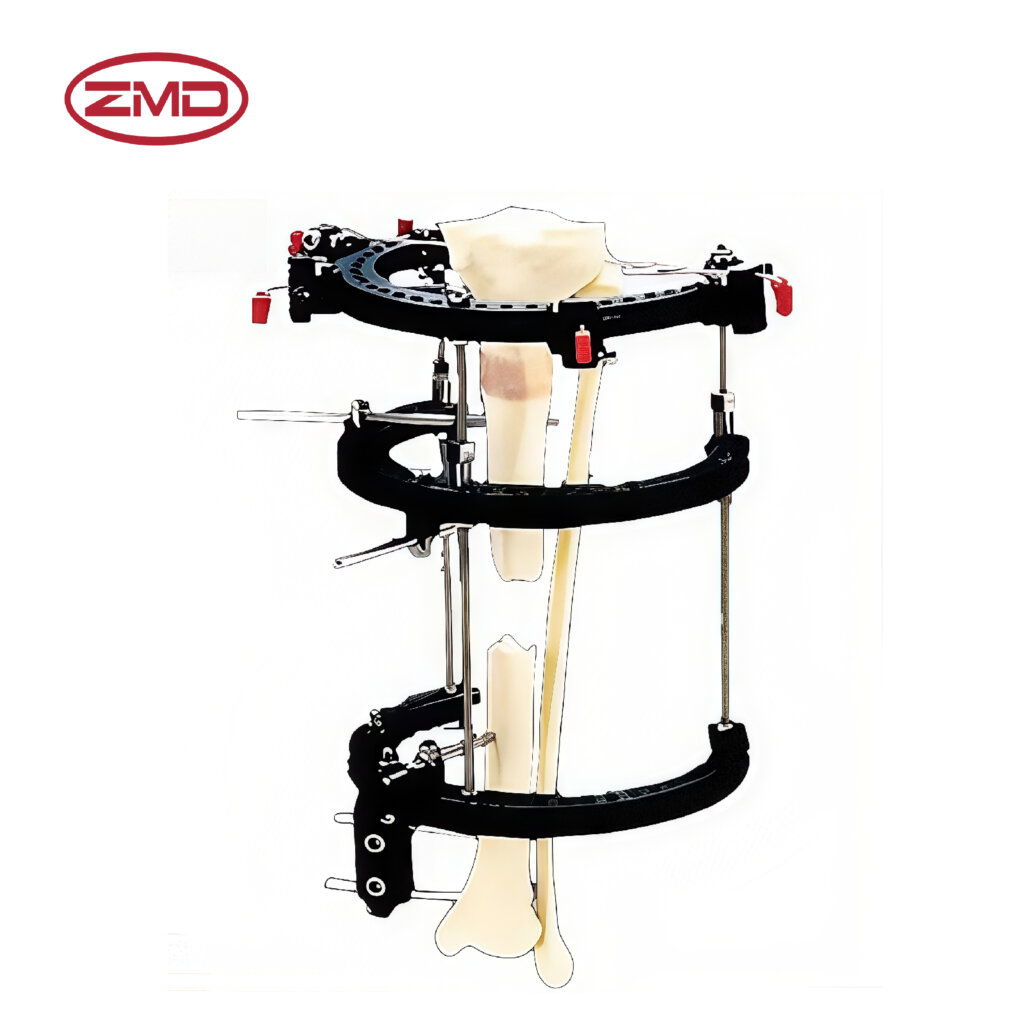
- Home
- About Us
- Products
- Trauma Internal Fixation System
- Spinal Internal Fixation System
- External Fixation
- Artificial Implants System
- Sports Medicine
- Power tools
- VSD System
- Instruments
- Medical supplies
- Blog
- Personnel Profile
- Contact Us
Phone line
| CODE | PRODUCTION | DESCRIPTION | MATERIAL |
| ZJ105 | Pennig Minifixator L-Clamps(Left-Right) | 1 pair | Aluminum |
These clamps are usually made of high - quality metal. The use of such a material is essential for durability. High - quality metal can withstand the mechanical forces involved in orthopedic procedures, such as the pressure exerted to hold bones in place and the potential stress from patient movement. This ensures that the clamps maintain their structural integrity and functionality over an extended period
With proper training, they can be relatively easy to install on the minifixator. The installation process requires an understanding of the Pennig Minifixator system and the correct way to attach the L - Clamps. Once the medical staff is familiar with the specific steps and techniques, they can carry out the installation efficiently during an orthopedic procedure
Yes, they can be adjusted to achieve the optimal fit and tension. The adjustability of these clamps is a crucial feature. As the treatment progresses or as different patient anatomies and orthopedic conditions require, the clamps can be modified. This allows for fine - tuning the fixation to ensure that the bones are held in the most appropriate position and with the right amount of force for proper healing.
They provide a strong grip to ensure stable fixation. The strength of the grip is designed to hold the bones firmly in place, especially in cases where there is a risk of displacement due to factors like patient movement or the nature of the orthopedic injury. The specific design of the clamps, including the L - shaped structure and the clamping mechanism, contributes to this strong grip
They are suitable for specific types of fractures where angled support is needed. The L - Clamps' unique design makes them particularly useful for fractures that require fixation from different angles, such as complex long - bone fractures or fractures involving joints. However, for simple fractures where a straight - on fixation may be sufficient, other types of clamps or fixation methods might be more appropriate
There may be different sizes available to fit various minifixator setups. The availability of different sizes provides flexibility to match the specific requirements of different orthopedic procedures and patient anatomies. This allows surgeons to select the most appropriate size of L - Clamps to ensure a proper fit and effective fixation
In some cases, if they are in good condition, they can be reused. After proper cleaning, sterilization, and inspection to ensure that their structure and functionality are intact, the clamps might be suitable for reuse. However, this decision usually depends on the hospital's protocols and the specific circumstances of each case
They are mirror images of each other to fit on opposite sides. The left and right L - Clamps are designed to work in tandem, with the left clamp fitting on one side of the minifixator and the right clamp on the other. Their mirror - image design allows for a symmetrical and balanced fixation around the bones or affected area
With proper care, they can have a long lifespan. The lifespan of the clamps depends on factors such as the frequency of use, the forces they are subjected to during procedures, and the quality of maintenance and sterilization. If cared for properly, they can serve effectively for multiple orthopedic procedures
They are specifically designed for the Pennig Minifixator and may not be compatible with other systems. The L - Clamps' dimensions, shape, and attachment mechanisms are tailored to work with the Pennig Minifixator. Their unique features that provide angled support and tandem functionality are optimized for this specific system and may not interface well with other fixation systems.
Oh yeah! I have to mention their payment options and discount offers, which are awesome! Those payment methods are as flexible as moving water and can be chosen freely according to our cash flow situation. And the frequent discounts, like a timely rain, have been moisturizing our financial statements time and again, and have had a rocket-like positive impact on our profits! With ZMD, I feel relaxed and at ease when it comes to purchasing!
Send us a message if you have any questions or request a quote. Our experts will give you a reply within 24 hours and help you select the right valve you want.
Book Now
If you are looking for professional orthopedic medical product solutions, don’t hesitate to contact us now!

We are an integrated manufacturer specializing in orthopedic medical industry, providing high quality and reliable orthopedic medical products to customers worldwide.
Copyright © 2024 ASK Project